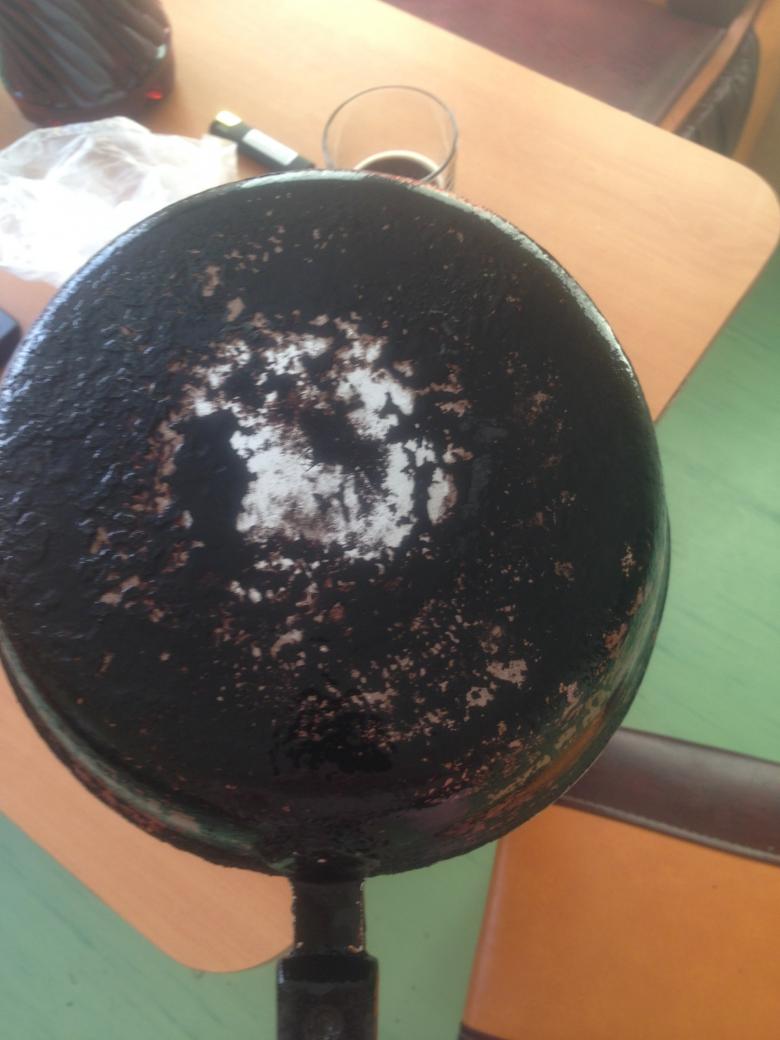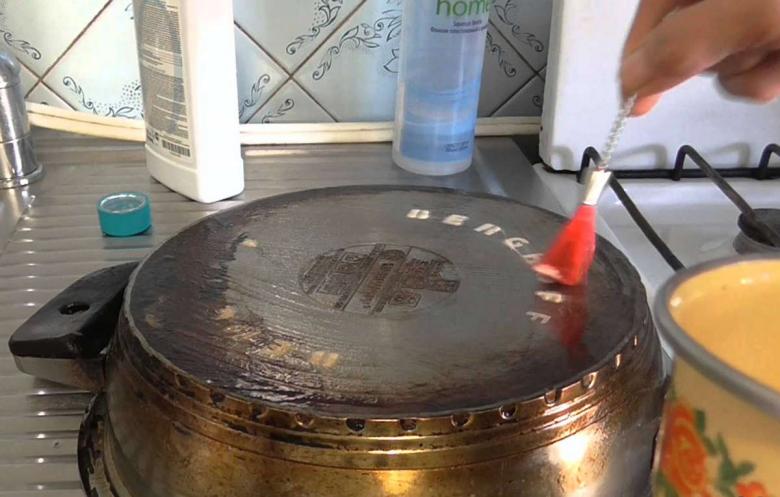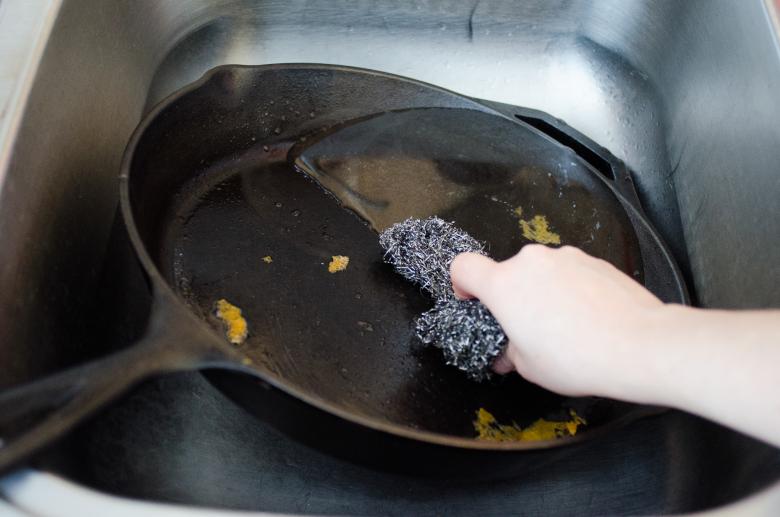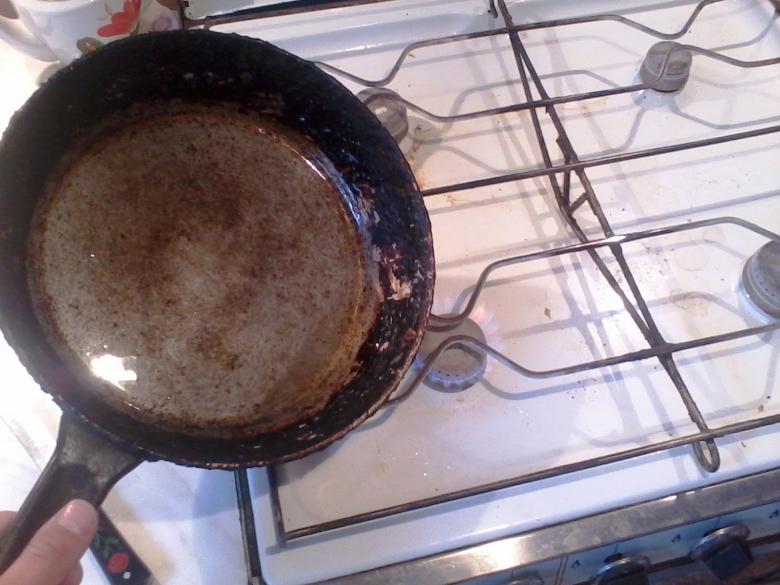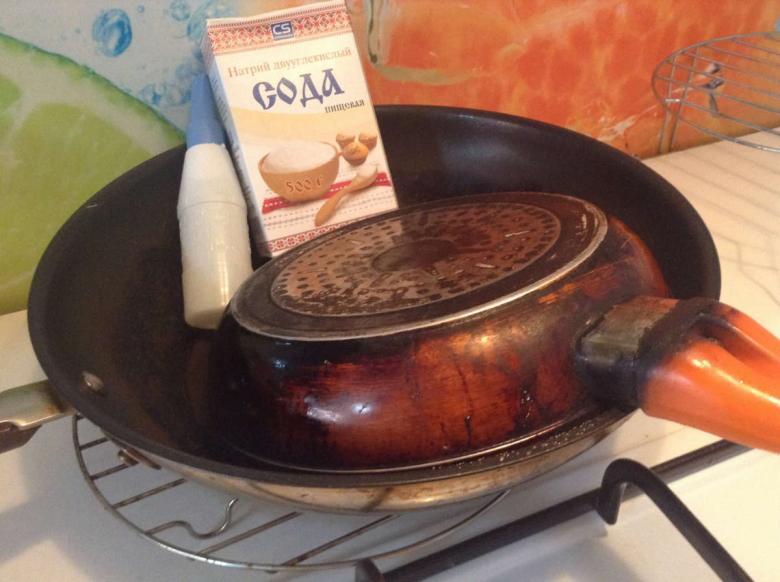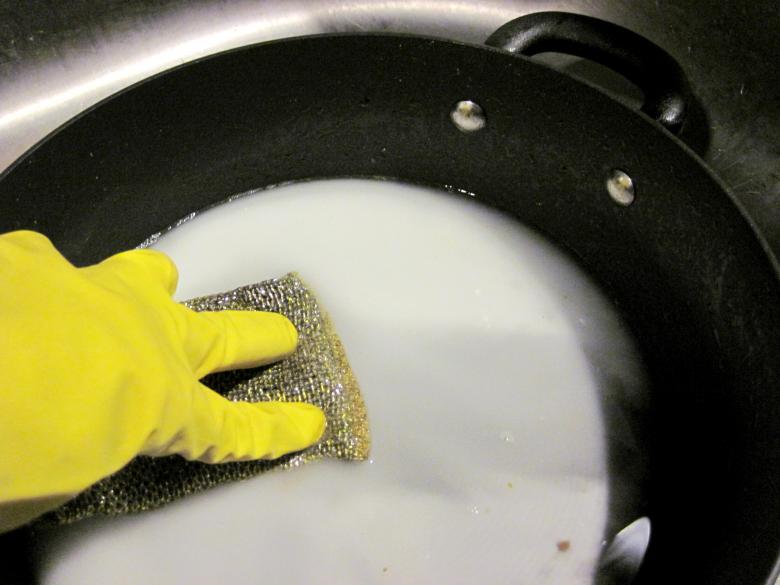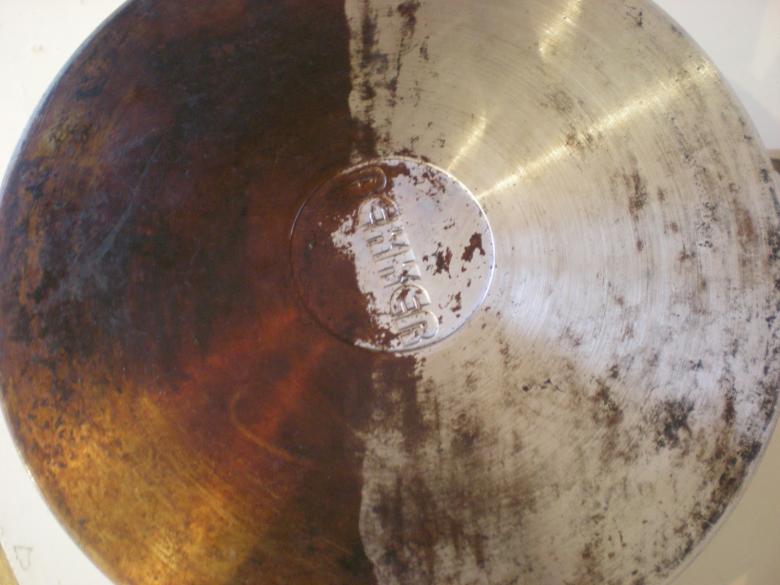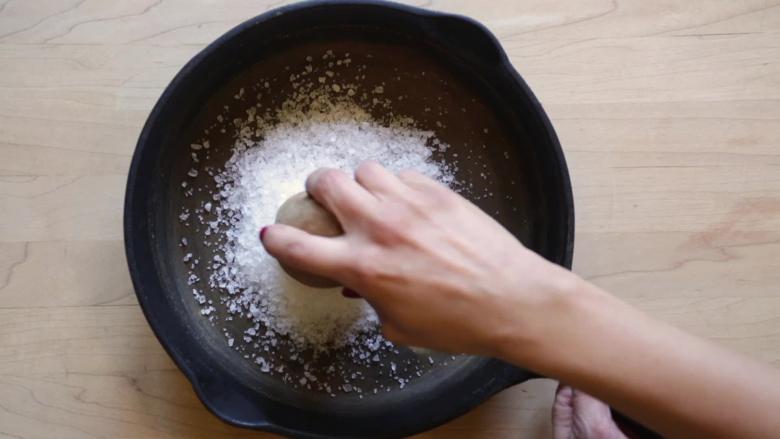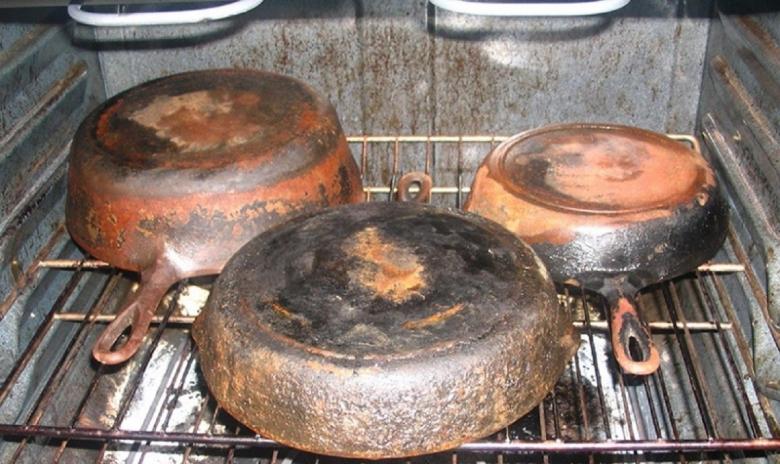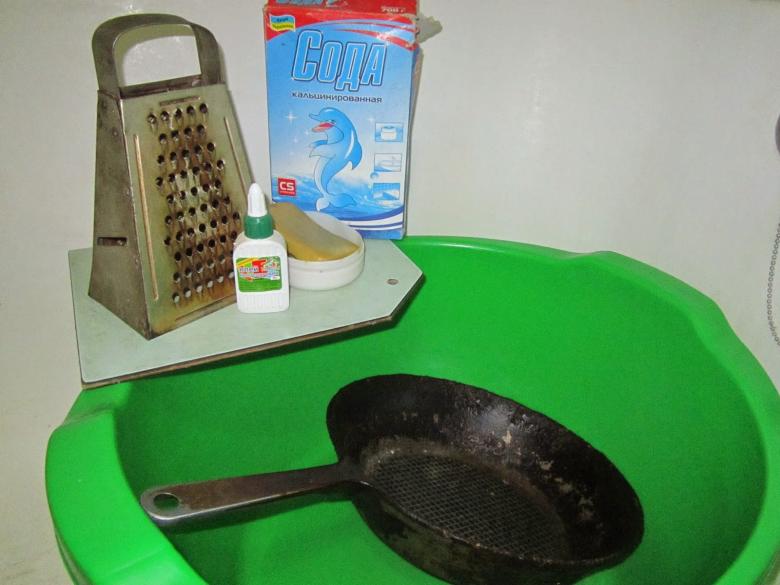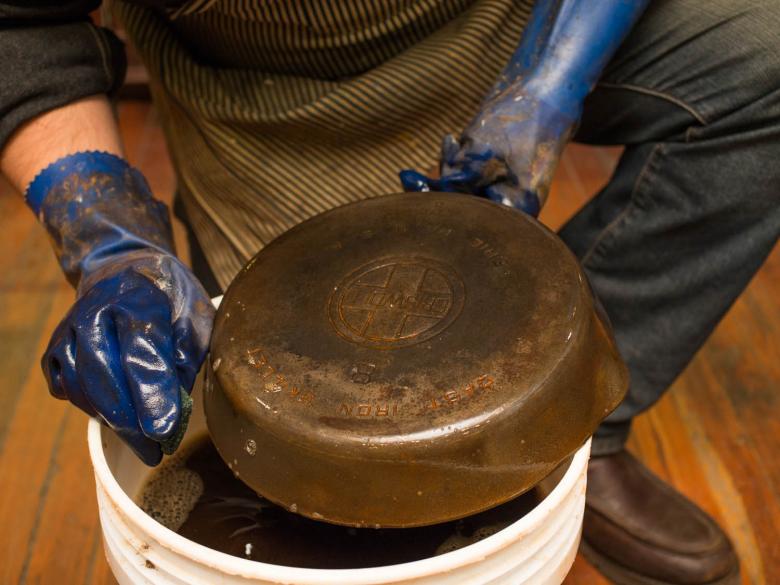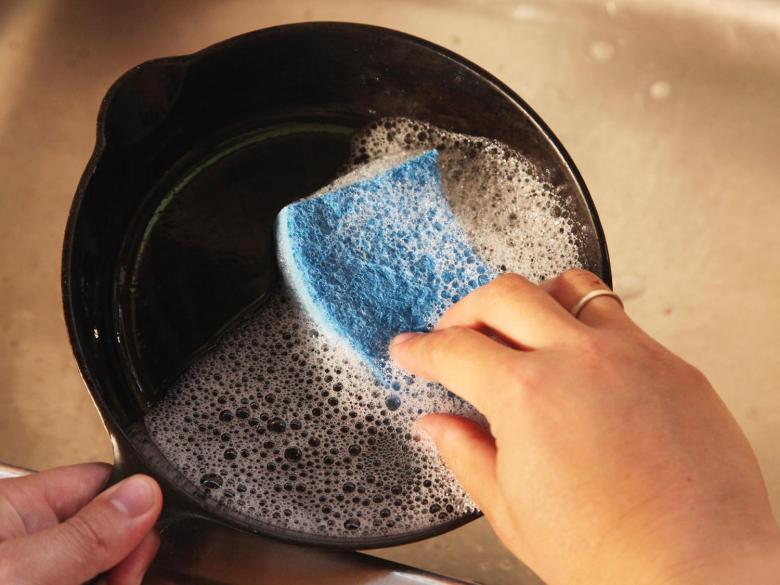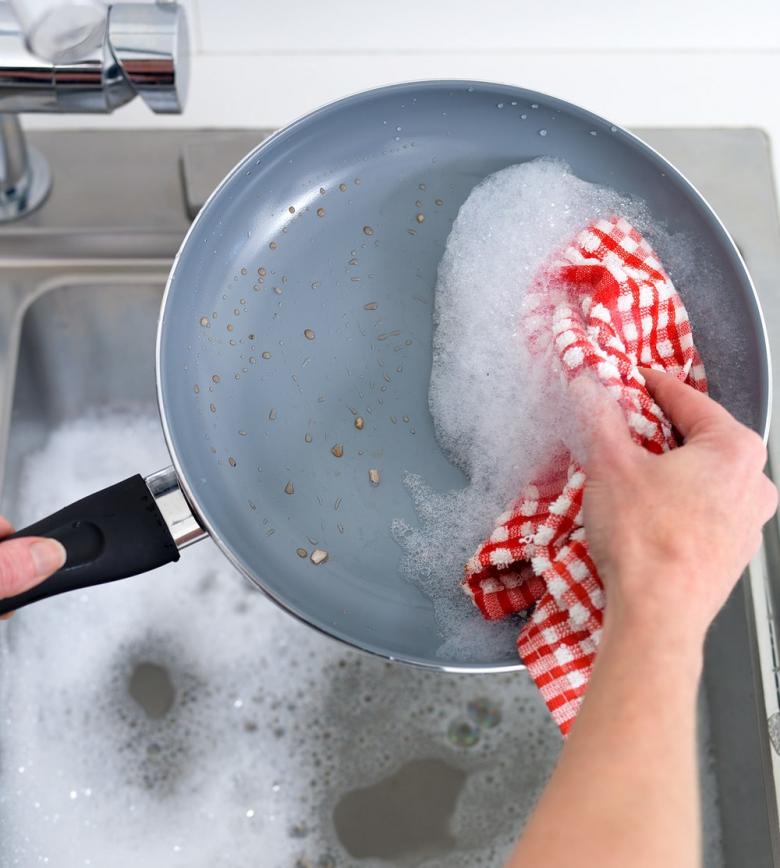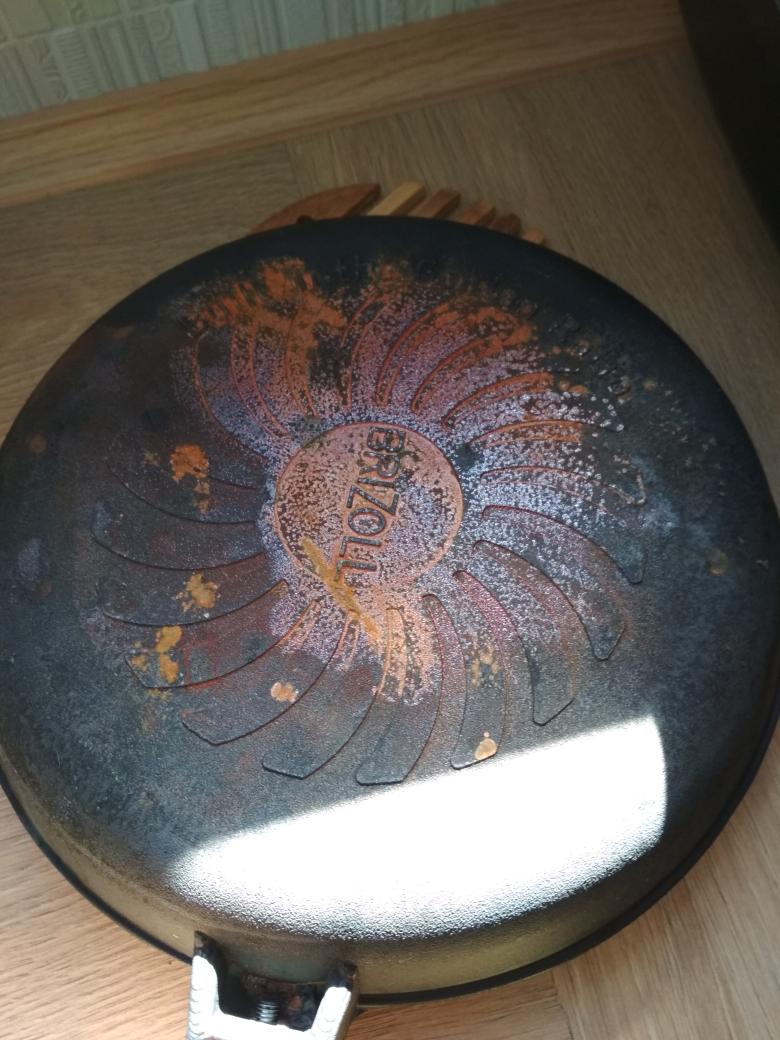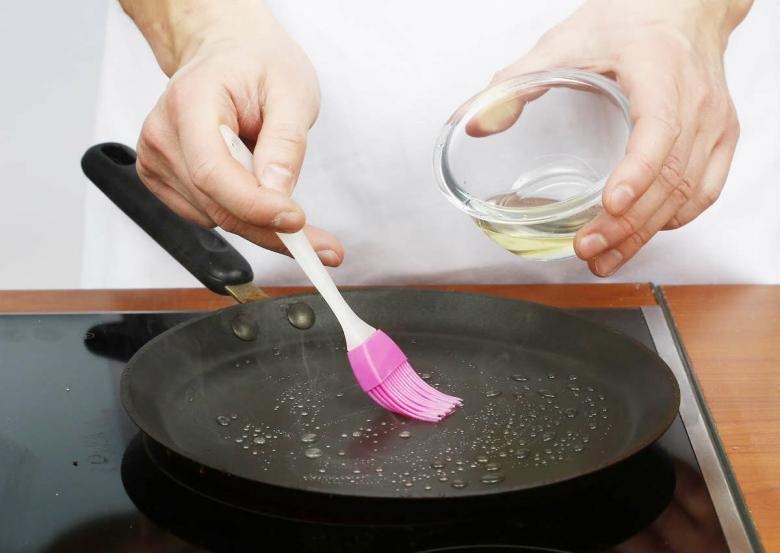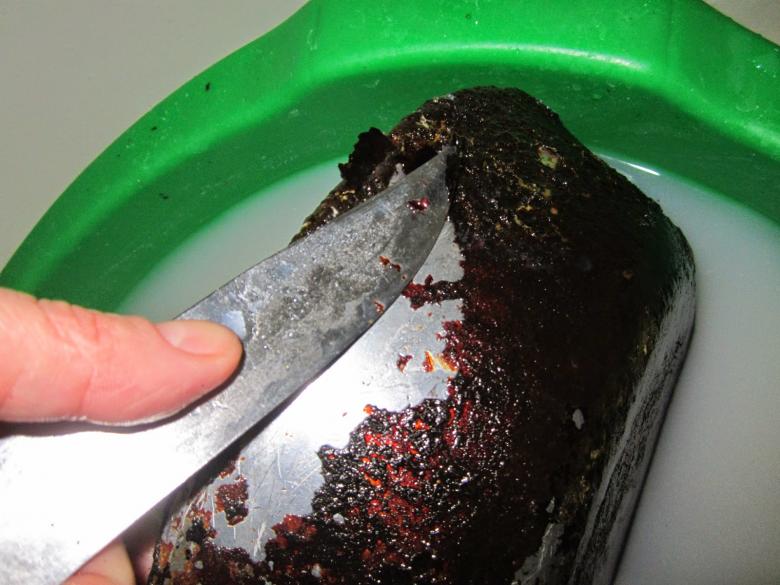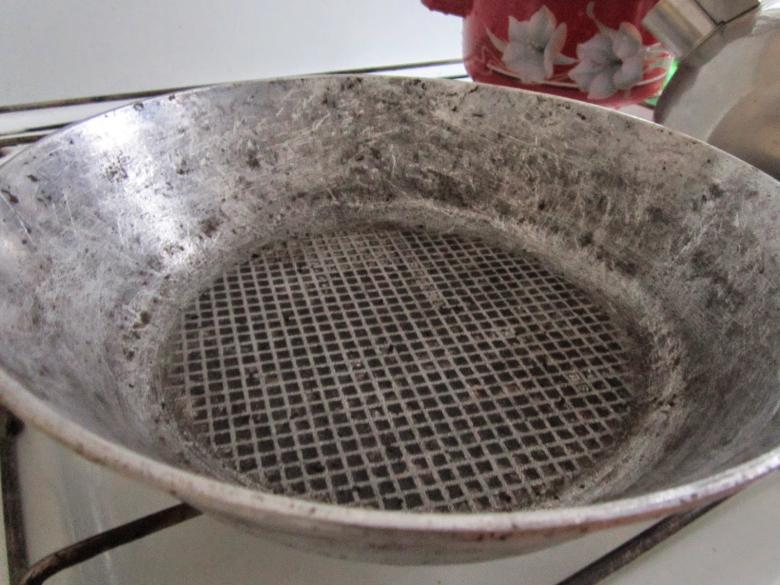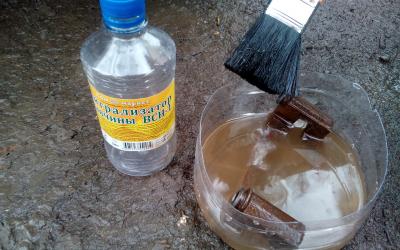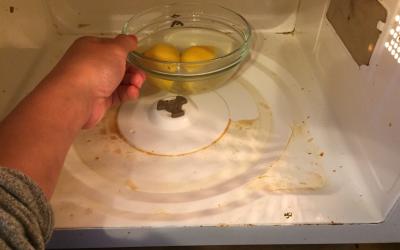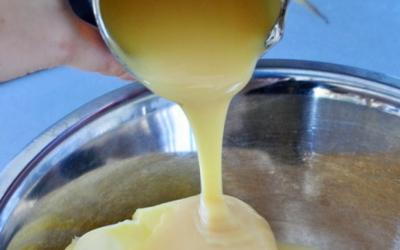How to clean cast iron and nonstick pans from carbon deposits at home using mechanical methods, household chemicals and folk methods
Over time, even with careful care, a frying pan will become encrusted. Burnt grease and food residue form a thick layer that is difficult to get rid of, especially when it comes to older cast iron pans.

Most cast iron pans that have been in use for years have a thick black layer. For many, this is a problem solely with the appearance of the cookware, but this opinion is wrong. Carbon buildup is burned grease and food residue. And if the pan is used on a gas stove, it is also the products of gas combustion.

When heated, such a layer releases into the air a lot of carcinogens, so it is necessary to get rid of this layer and try to prevent its formation.
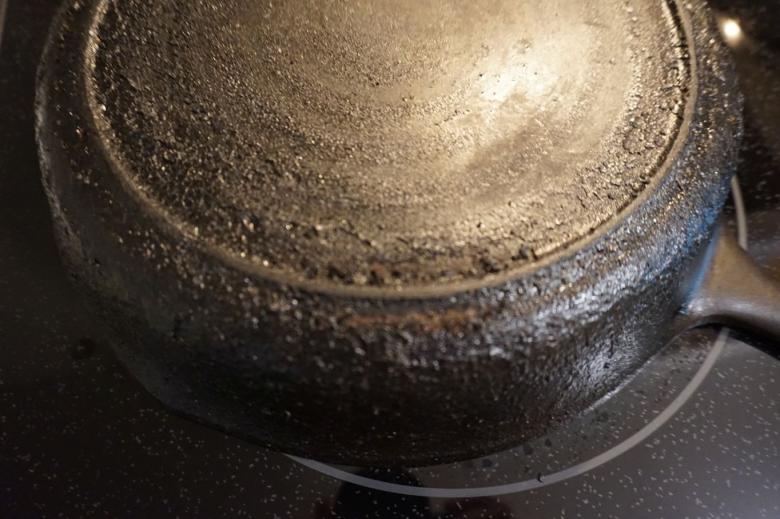
The main ways to remove fouling from the frying pan:
- by mechanical means;
- with the help of special household chemicals;
- folk remedies.

Before you clean a frying pan from stale carbon deposits, you need to understand which method is suitable for a particular type of cookware. Modern frying pans with ceramic or Teflon coating do not tolerate aggressive measures that damage the thin non-stick layer.

Cast-iron pans should not be lowered into cold water after strong heating, otherwise they can crack. They need time to cool down. The most unpretentious in terms of care stainless steel pans.

Mechanical cleaning methods
Mechanical cleaning should be done outdoors, as fouling particles can spread throughout the room. Stainless steel and cast iron pans are excellent with these methods. They are not suitable for non-stick and aluminum pans.
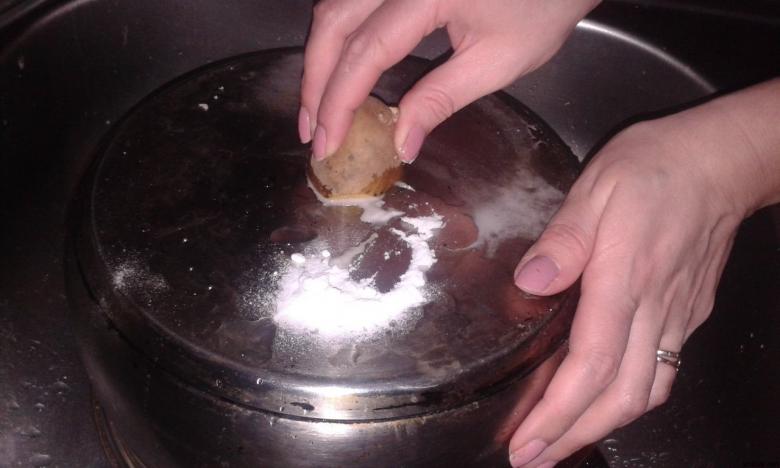
Shot blasting
A jet of sand is delivered from a special apparatus under strong pressure, with the help of which the soot from the surface is split and removed. Such apparatuses are available in car repair shops and car washes. After treatment, the pan is cooled in a container with cold water, with which the remains of the scale and sand are removed.

Sanding
Using a special attachment on a drill or grinder, the soot is scrubbed off. The dishes must be grinded outdoors. If it is not possible to do the cleaning outdoors, the area in which the procedure is to be carried out must be limited as much as possible. It is also important to take care of eye and skin protection, soot lags at high speed, the use of goggles and gloves is a safety issue.
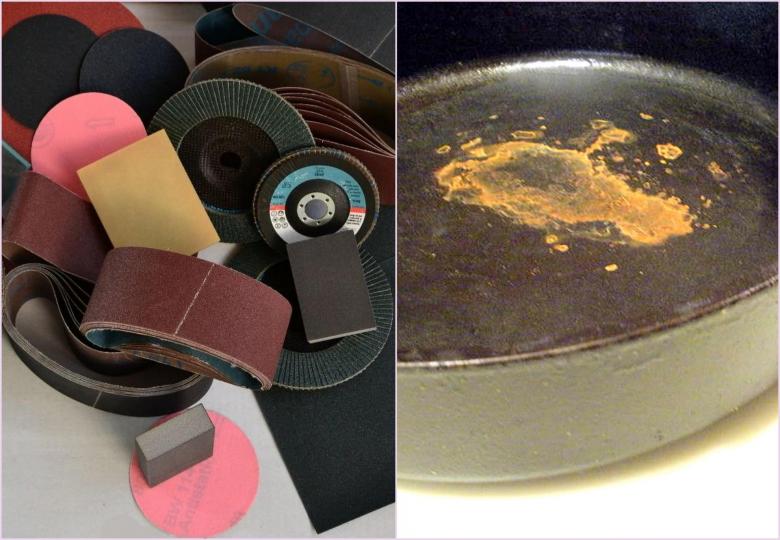
Household chemistry for removing soot
Specialized products perfectly cope with the task of removing black soot from the surface of cookware. It is important to read the instructions before cleaning a cast iron pan.

Some products are applied directly to the surface in concentrated form, some need to be diluted with water. Most products are quite caustic, and you need to protect the skin on your hands when using them.

The most popular products for removing burnt grease are:
- Cilit Bang Anti-Grease;
- Mr. Muscle;
- Cif;
- Shumanit.
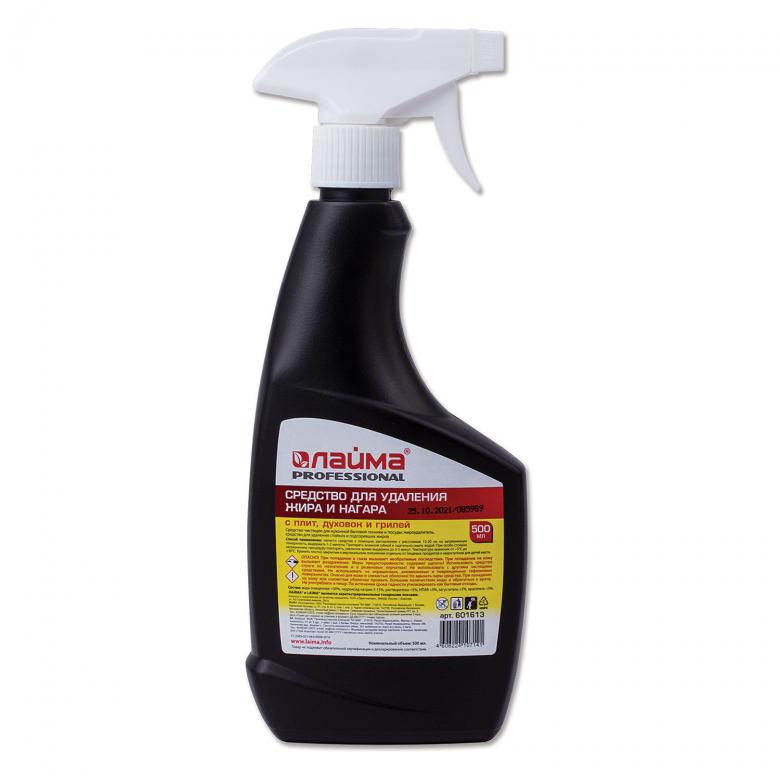
All of these products are easily sold in any department of household chemicals. Most of them are effective against small dirt, but Shumnit can handle even a thick layer, but it is very corrosive.After using household chemicals, the pan should be thoroughly washed several times before you start cooking on it again.

Folk cleaning methods
In cases where neither mechanical nor chemical methods are suitable, especially if there is an allergy to the components of aggressive chemical compositions, folk recipes come to the rescue. Their peculiarity is that they use the simplest materials that almost everyone has in the apartment, and if not, their price is not high.
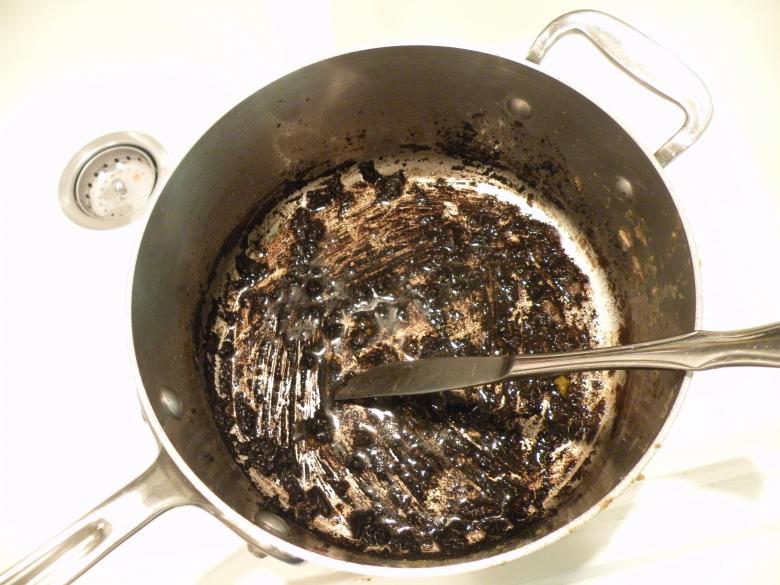
Cleaning with stationery glue
To do this, heat water on the stove in a large saucepan, add a bottle of silicate glue there. Then add grated laundry soap and a packet of baking soda. In this solution to put the pan and boil for 15 minutes.Then turn off the stove and leave for 2-3 hours, and with a metal brush peel off the soot.
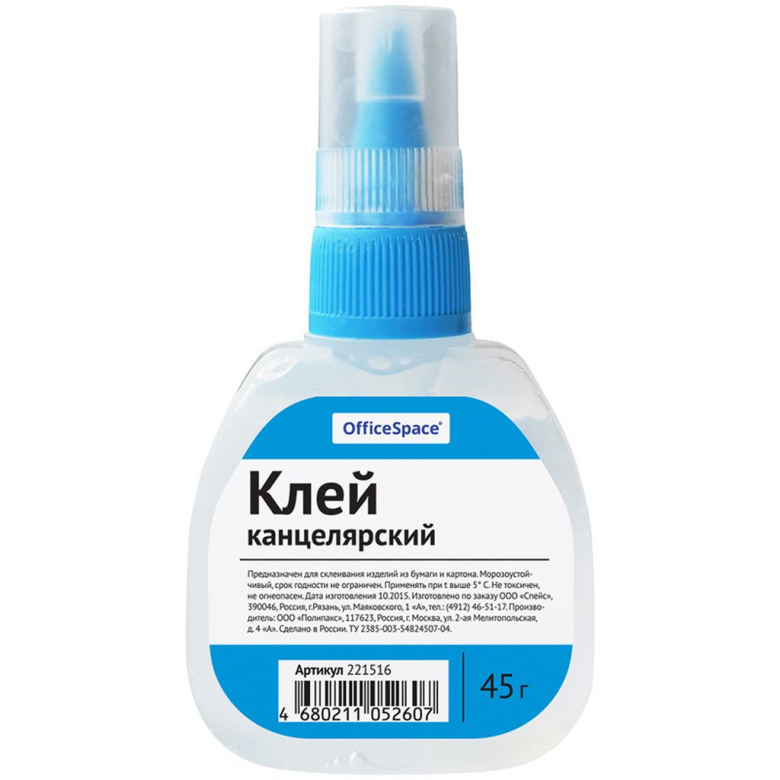
Vinegar
Only good for pans that don't have any damage, cracks or scratches. Once in the scratch, the acid can corrode the material and the damage will become larger.

Soak the pan in vinegar essence (70% acetic acid) for 20 minutes. This is a very caustic agent that will help the soot to peel off the surface, after which it will be easy to remove with a metal sponge or brush.
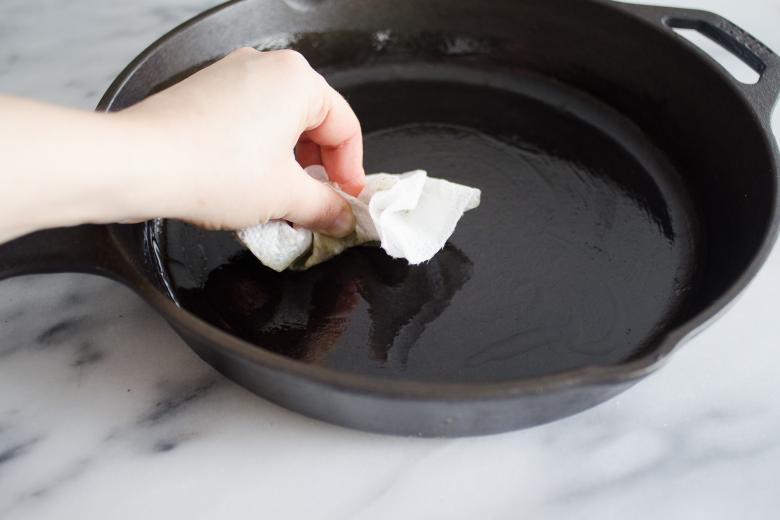
Hydrogen Peroxide
Hydrogen peroxide, with baking soda added to it, can be used to easily remove fouling from pans. In a separate bowl, baking soda and hydrogen peroxide are mixed until a paste is formed, which is applied evenly to the entire soiled surface. After 15 minutes, the composition is completely rinsed off and the pan is mechanically cleaned.
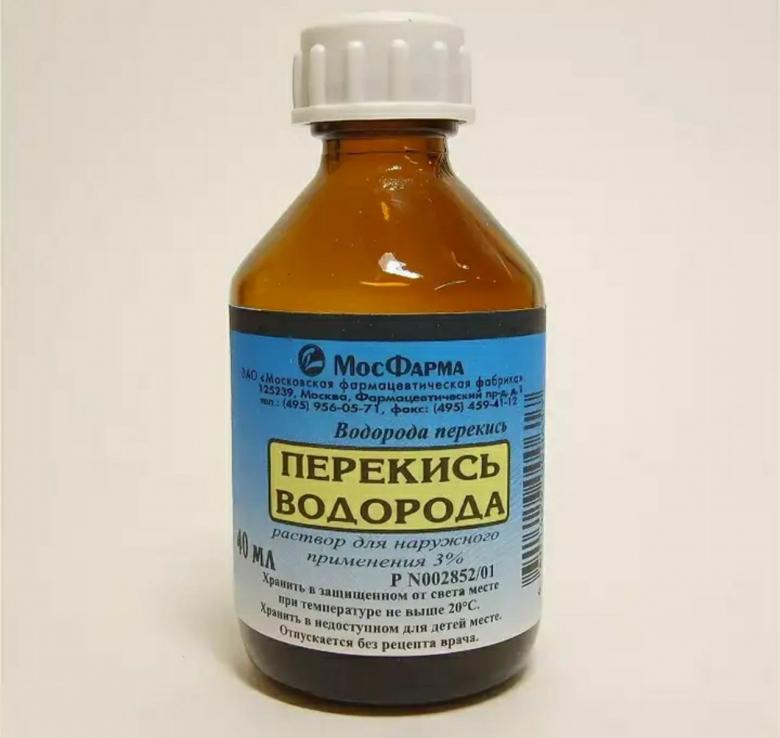
Oven glazing
One of the most popular methods that will work with any frying pan, except those with plastic handles. To do this, heat the frying pan in the oven for 20 minutes, take it out, let it cool slightly, not completely, but so that it can be touched. While still warm, wipe the pan with salt or detergent, depending on the type of pan.
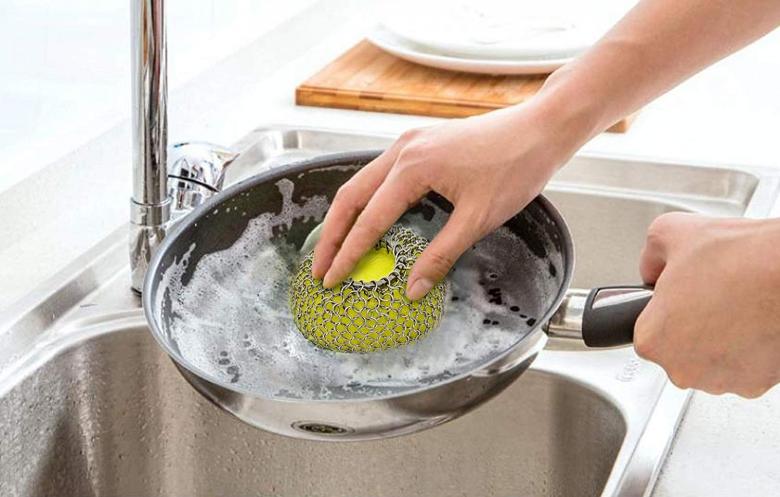
Salt
You can remove a thin layer of carbon deposits with salt, to which you need to add a few drops of water. The mixture is applied to a sponge, and the pan is cleaned mechanically.
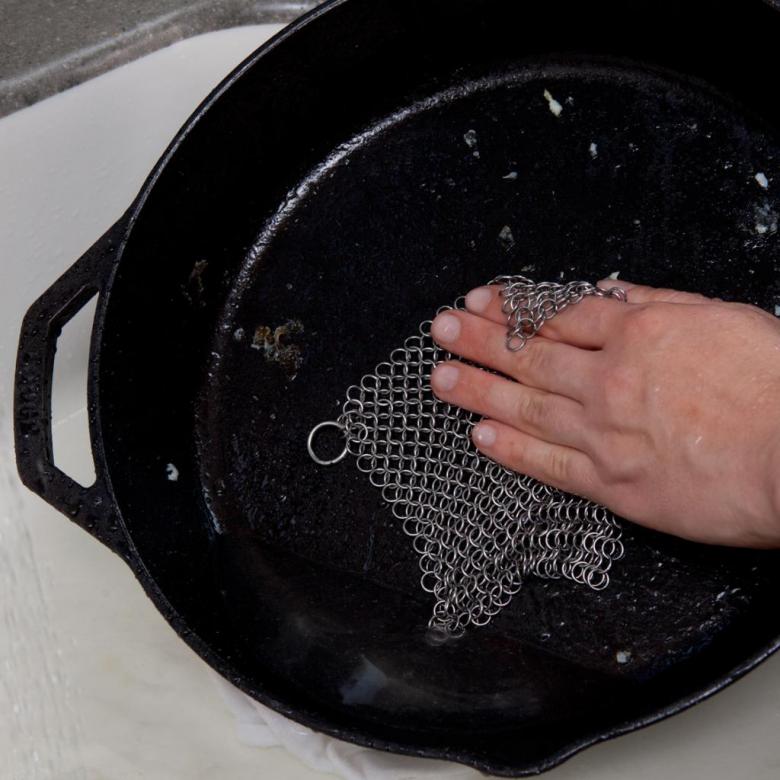
Removing rust
In most cases, when removing fouling. The cookware must spend a long time in water, after which it is imperative to wipe it thoroughly. Otherwise, rust can form on the surface, which is no less unpleasant than the black layer on the dishes.
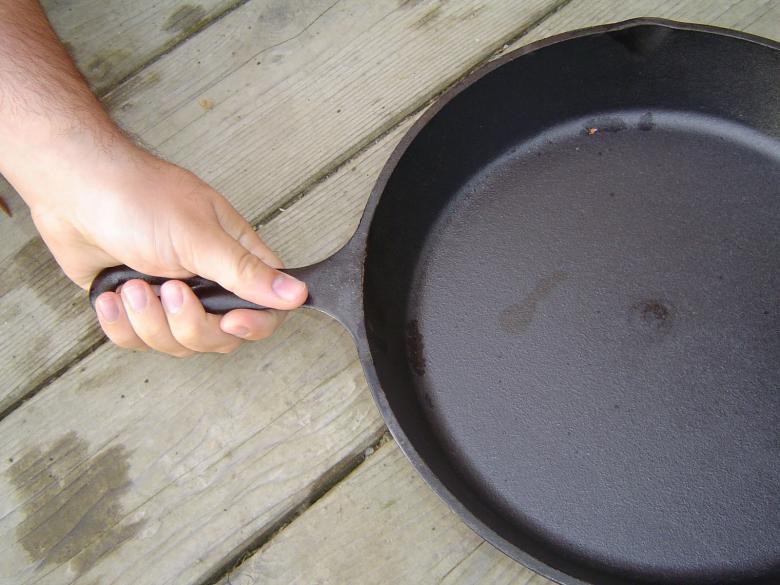
Cast iron pans are particularly affected because of the porous surface. And if this trouble has occurred, you need to know how to clean the cast iron pan from rust quickly and without damaging the dishes.
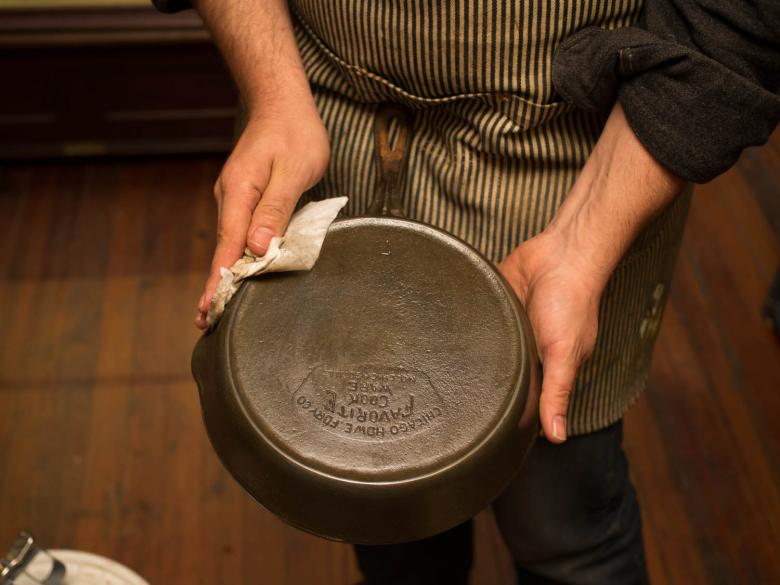
Rust can be removed mechanically with specialized household chemicals.

Ordinary baking soda will help to remove the red plaque. To do this, you need to take a large container, pour water into it, pour 200-300 grams of baking soda and boil for about 2 hours. After that, mechanically remove the dirt.
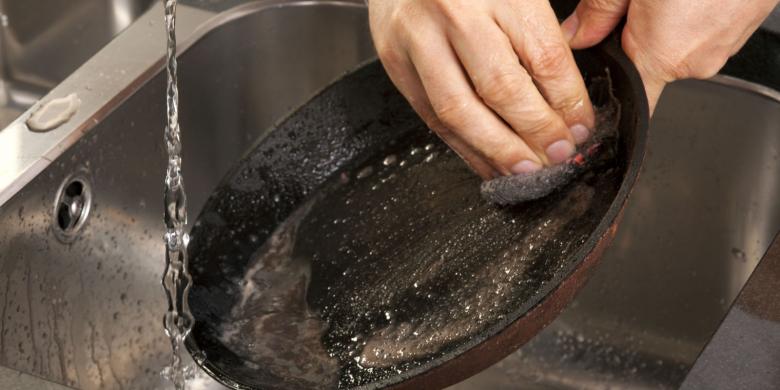
Another faithful helper in the fight is Coca-Cola. Orthophosphoric acid in its composition perfectly fights oxidation. To do this, you need to fill the pan completely with baking soda, heat it, but not boiling, and leave it for 1 hour. After that, the dirt is easily removed with a stiff brush.
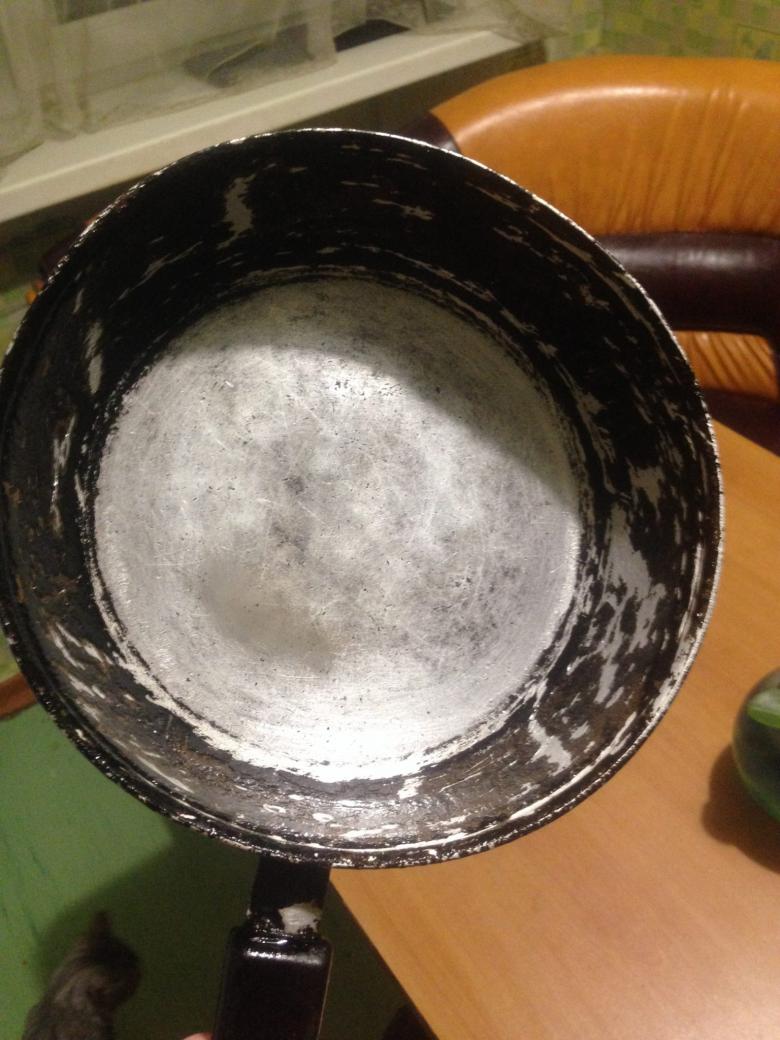
Preventing fouling
In order to ensure that pans as long as possible please the eye with clean walls without fouling, you should remember a few simple rules:
- Before using the pan for the first time, preheat it with salt and then with oil to create a natural protective layer;
- Do not leave grease on the bottom and walls; wash the frying pan immediately after cooking without waiting for it to cool completely;
- After cleaning the frying pan from fouling, it is recommended that the protective layer be refreshed.

If you use these simple tips, pans will always be clean, food will not stick to them, and washing dishes will turn from a dull and long routine into a simple and easy task.


